How Do Radiators Work? (Parts & Processes Explained)
-
Jeff Weishaupt
- Last updated:

If you live in a chilly area, you most likely have a radiator at home. Like everyone else, you’ve probably wondered how basic home appliances work and assumed that it may be too complicated to understand. However, radiators actually rely on a pretty simple system.
In simple terms, they use a heat transfer process called convection to warm up water in the radiator. The hot water then heats up the surrounding air via convection, moving the hot air around the room for warmth distribution.
However, this operation may vary since there are multiple radiator types in common use. Understanding how each radiator works will get much easier once you’re familiar with the terminology. Keep reading to learn everything important about radiators and their operation.
How Do Radiators Work?
Radiators are essentially a heat exchanging system. Their main purpose is to transfer thermal energy from medium to medium. They may cool or heat the surroundings, depending on your intended use. Radiators are most commonly used to heat buildings and homes, but you may also find them in cars and electronics. In every case, they provide heat to the environment. This can either warm the surroundings or cool down a fluid or coolant supplied to the radiator.
In automotive engine cooling or HVAC dry cooling towers, radiators are used to cool down fluids. Even though the name suggests otherwise, radiators do not solely rely on thermal radiation for operation.
Instead, they transfer most of the generated heat with the help of a process called convection. Still, radiators use various common mechanisms to transfer their heat. That includes convection into flowing liquid/air, conduction into the liquid/air, and thermal radiation.
It may also rely on a phase change process to transfer heat in certain situations, such as drying clothes. Overall, a radiator is any device that circulates liquid via exposed pipes. These pipes often have fins or other extensions to increase the surface area.
Contrastingly, a convector is any device that doesn’t directly expose its source of heat. Radiators feature multiple fins to expand their surface area. This allows them to easily exchange heat with the surroundings. These fins are connected to the tube supplying liquid through the radiator.
Then, any exterior liquid or air will connect with the fin and carry off heat. However, if the fins are damaged or dirty, this contact will be obstructed and result in ineffective heat transfer.
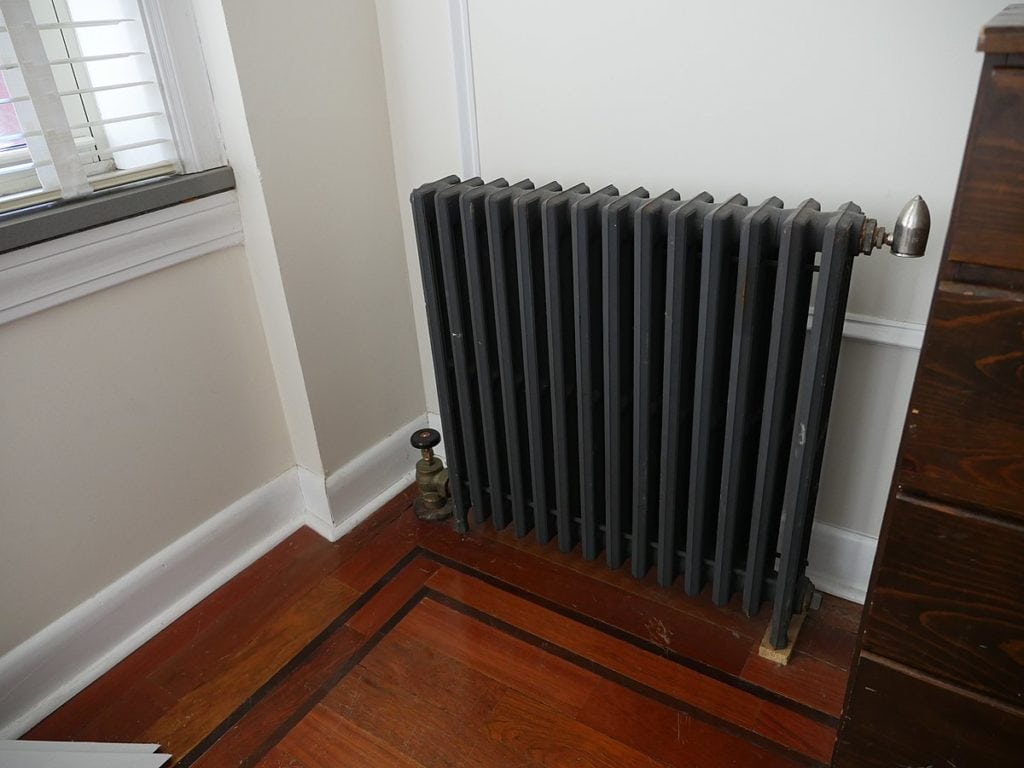
What Are the Different Types of Radiators?
Depending on your intended use, you can choose from various radiator types available on the market. These types can be categorized by the radiator’s power source, panels, and purpose.
Plumbed Radiators
Plumbed radiators are the most commonly installed radiators in homes. They’re connected to the home’s central heating system. The boiler heats the hot water inside the radiator before circulating it through the home’s piping system and leading to the radiator.
Dual Fuel Radiators
Dual-fuel radiators are typically fitted into homes or buildings that do not have a central heating system. That may include offices or annexes within the home. As a result, the radiators aren’t controlled centrally but on an individual basis instead.
You can plug certain dual-fuel radiators into a conventional socket, but other options may require an electrician to install them professionally.

Electric Radiators
Electric radiators are best described as central heating radiators with a mains-powered instrument fitted inside. Since the radiator does not rely on the home’s central heating system for operation, you can keep the radiator heated even in the summer when the central heating is off.
This serves perfectly as heated towel rails in the summer and a traditional radiator in the winter.
Single Panel Radiators
Single-panel radiators have one of the most basic systems in all options, relying on the home’s central heating system for operation. These radiators are typically horizontal and wall-mounted. Most importantly, the slimness of these radiators makes them easy to fit in awkward corners.
It’s worth noting that these radiators expel less warmth than double- or triple-panel models.
Double Panel Radiators
Double-panel radiators feature two single panels placed against each other. These radiators are also wall-mounted and horizontal. Of course, they’re better at providing warmth than single-panel radiators but take up more space in the home.
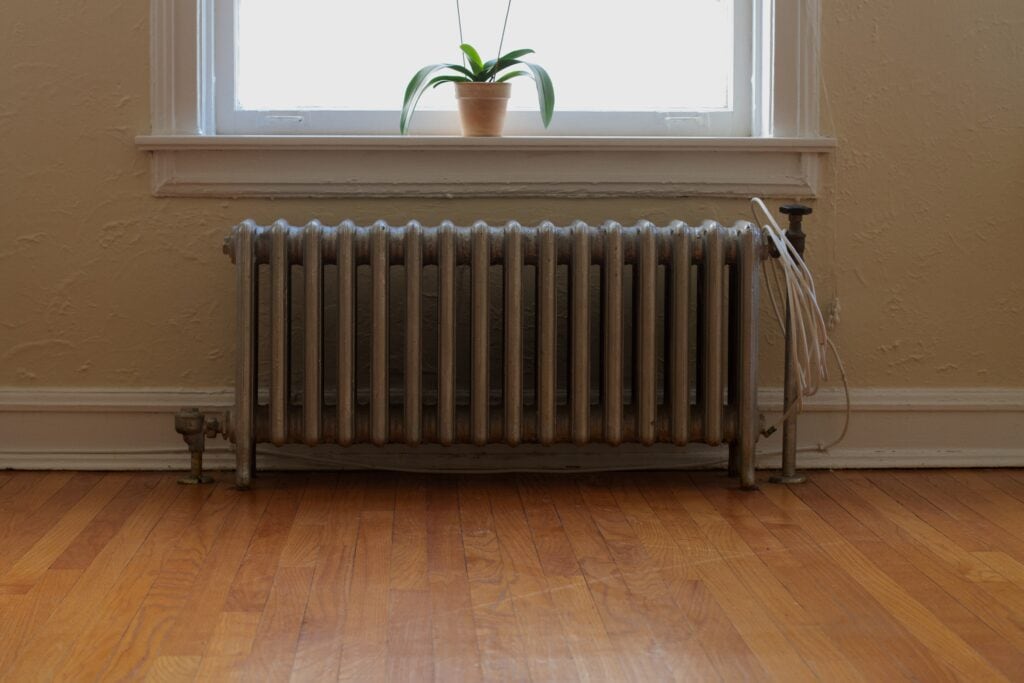
Column Radiators
If you’re interested in vintage and characteristic designs, a column radiator may be just what you need. Still, you may find certain contemporary column style options. In terms of heat output, these radiators are exceptional, but they take up more space in the home.
Their system consists of multiple tubes placed vertically, with most modern options made from steel. Older models may be made from classic cast iron. Since they’re available in multiple designs, column radiators tend to make a design statement instead of blending into the wall.
Vertical Radiators
Also known as upright radiators, vertical radiators are ideal for those living in smaller spaces or looking for discreet designs. Their narrow designs help free up wall space, and you may find them in columns, modern, and other designs.
Additionally, some options may feature small pegs to hang tea towels or other kitchen items.
Heated Towel Rails
Also known as ladder rails, heated towel rails have the specific purpose of drying and heating towels, which is why they’re always placed in the bathroom. Aside from heating and drying the towel, they do an adequate job of heating the bathroom.
Heated towel rails typically rely on the home’s central heating system, so you may opt for electric towel rails if you want them to operate individually. This way, you can still use them in the summer when the central heating system is off.
Contrastingly, you could opt for a dual-fuel towel rail, which runs on the central heating system when it’s on. If the central heating is off, it runs on mains-powered electricity.
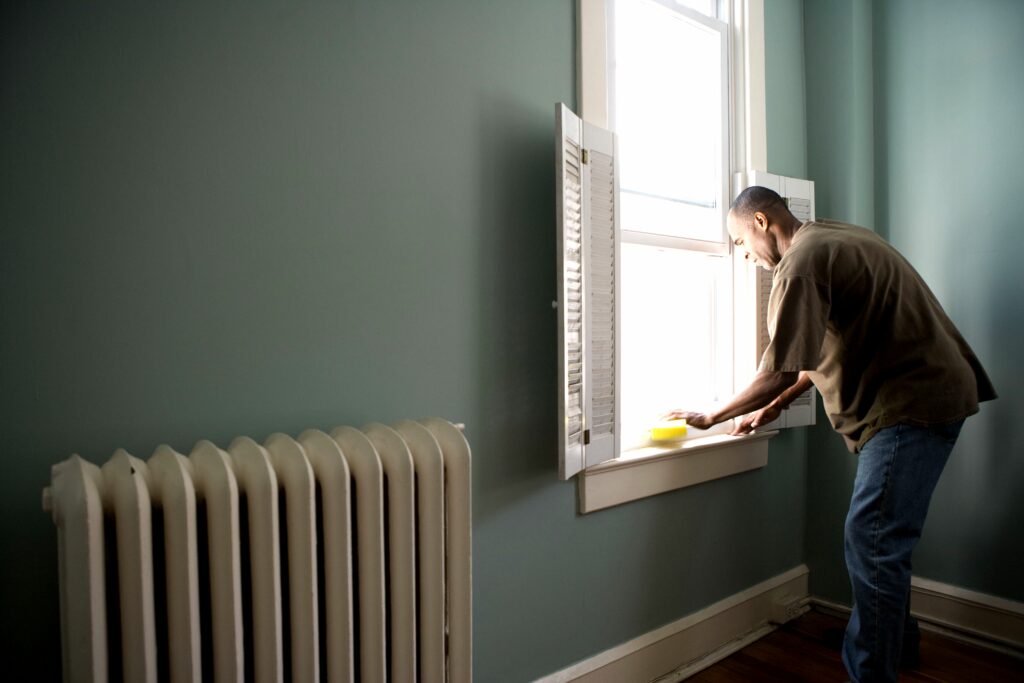
Designer Radiators
Designer radiators mostly serve an aesthetic purpose rather than being practical and great at expelling heat. These radiators are available in a wide variety of designs, sizes, shapes, colors, and more.
However, if you live in chilly areas, it’s always better to prioritize the radiator’s heat output above its appearance.
 Where Are Radiators Used?
Where Are Radiators Used?
Radiators are most commonly used in homes as heating systems, but they can also provide unique uses in other cases, such as cooling towers, cars, electronics, and spacecraft. Here’s how radiators are used in different placements.
Homes
At home, radiators draw heat from air or water and expel heat to the surrounding air. As a result, they can effectively warm up a room. It’s also worth noting that radiators are made from metal, which is an excellent heat conductor.
They’re most often used in Europe to heat entire buildings, while Middle Eastern countries use radiators to heat a single room instead of using fan heaters or space heaters.
Cars
In automobiles, radiators are fitted to cool the internal combustion engines. They may serve this purpose in railway locomotives, piston-engine aircraft, motorcycles, stationary generating plants, and watercraft.
More specifically, watercraft have an unlimited supply of cool water on the exterior, which is why they rely on liquid-to-liquid radiators instead.

Cooling Towers
You may find radiators in closed-loop or dry cooling towers. This system cools buildings with the help of liquid-cooled chillers for better ventilation, air-conditioning (HVAC), or even heating. Meanwhile, it keeps the chiller coolant separate from its surroundings.
Electronics
As the modern age advances, electronic devices get smaller and smaller. As a result, it becomes more difficult to disperse waste heat expelled from the device, which is why tiny radiators are fitted in these devices.
Also known as heat sinks, these radiators expel heat from the device’s components into a cooling air stream. Instead of using water, heat sinks conduct heat from the given source, relying on copper for better conduction.
They transfer the air’s heat via convection and conduction, only using radiation to transfer a small portion of the overall heat. You may also find radiators in liquid cooling loops to reject heat.
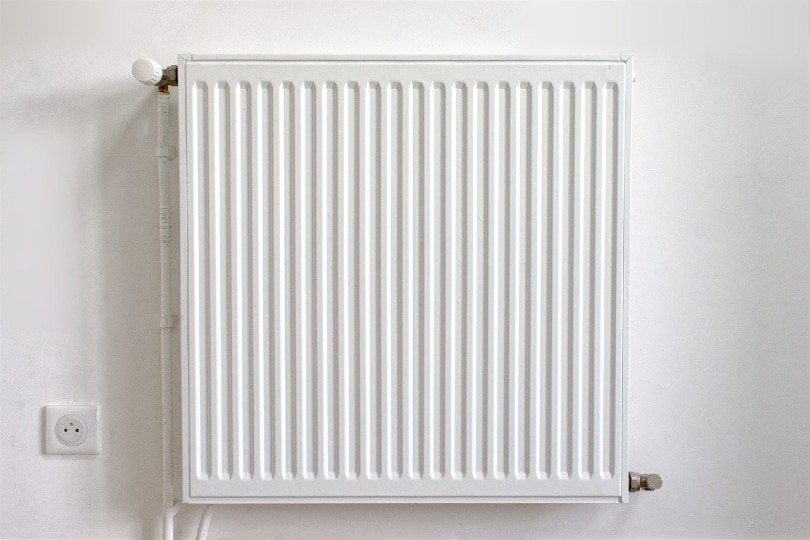
Spacecraft
Finally, radiators are also fitted in spacecraft to expel heat energy in the form of light. Since spacecraft operate at extreme temperatures, this light is generally infrared. Of course, this system can’t rely on conduction or convection for heat transfer as the space vacuum doesn’t allow it.
You can view images of the International Space Station and detect these radiators as large white panels connected to the main truss. Radiators are found in both uncrewed and crewed spacecraft.
Advantages of Radiators
Radiators have many advantages, such as their versatility, efficiency, and compatibility with renewable energy.
- Not a dry heat: Most radiators do not expel dry heat, which can be uncomfortable and hard to enjoy. The humid air of radiators is comfortable and pleasant on colder days.
- Versatility: There are endless radiator types and designs available on the market, so it’s impossible not to find one that fits your needs perfectly. Additionally, a standard radiator is versatile since it’s ideal for hanging and drying towels, wet clothes, and more.
- Radiator Covers: If you don’t like the look of your radiator, you can pick from the thousands of radiator covers available online to match the room’s aesthetics.
- Quiet: Radiators operate quietly, with older versions only making a low humming sound that’s easy to tune out. Electric radiators are the quietest option if you’re looking for a completely silent operation.
- Efficient: Electric radiators waste none of the energy used in their operation, turning every single Joule into useful heat. Not only does this help reduce your energy footprint, but it also helps save running costs. In comparison, wet or hydronic radiators are 20% to 40% less efficient than electric options.
- Compatible with Renewable Energy: The best part about electric radiators is their compatibility with renewable or solar energy. If you already have solar panels installed in your home, you won’t have to pay an extra penny to run your electric radiator. Of course, this helps you save money, but it’s also good for the environment. You can also find certain electric radiators that run on solar-powered batteries.
- Fast Warm-Up Time: Electric radiators heat up much faster than traditional central heating systems. This means you don’t have to wait to get warm. Contrastingly, thermal fluid radiators have a small thermal storage capacity. It results in a slower heat release at activation.
- Controllability: Most radiators also offer extensive control options. This allows you to guarantee energy efficiency maintenance. This way, you can also ensure that your heating bills stay low. You may find certain electric radiators with digital thermostats for added accuracy.
- Easy installation: Additionally, most radiators are pretty easy to install. Plus, they don’t require the expertise of a professional handyman. When it comes to electric radiators, you won’t need the help of an electrician as you only need to mount them to the wall.
- Zone heating: Zone heating options are typically only available in electric radiator options. This allows you to create separate heated zones throughout the home. This means you can heat only the guest bathroom if you have visitors. Since you won’t be heating spaces that aren’t in use, you can save energy costs.
- Maintenance: Electric radiators are easier to clean than gas central heating systems.
Disadvantages of Radiators
While radiators are mostly beneficial, certain models can have some downfalls too. Here’s everything to know about the disadvantages of radiators before buying.
- Size: If you opt for anything other than a single-panel radiator, it may take up more space in your home due to the multiple panels.
- Cost: There’s no doubt that radiators are costly, especially electric radiators. The average cost per electricity unit is higher than gas units. Additionally, purchasing radiator covers may not be cost-efficient. They can also obstruct the radiator’s full potential.
- Strain on Your Circuit: You may overload your central heating system by installing too many electric radiators. It’s better to consult a qualified electrician if you’re hoping to replace your gas central heating system entirely. The electrician may wire the electric radiators into fuse spurs. This will be crucial if you need to replace traditional central heating with multiple electric radiators.
- Hard to Clean: Radiators have multiple fins, rails, and panels. So, keeping them dust-free can require detailed cleaning now and then.
- Power Cuts: In case of a power outage, both electric radiators and the traditional gas central heating system will be affected. But it’s much simpler with the latter. If you need to re-establish the heating schedule, you’ll only need to connect one central point for the central heating. However, having electric radiators will require you to consult each unit to set the heating schedule.
- Positioning: If you don’t position the radiator correctly, you can end up losing a lot of heat. Additionally, the rectangular shape of radiators can make it awkward to decorate around them.
Frequently Asked Questions (FAQs)
What Are Radiator Accessories?
- Central Heating Inhibitors: If you add a new radiator to your central heating system, owning an inhibitor is crucial. These inhibitors coat the metal surfaces of the radiators and prevent rusting and chemical reactions.
- Radiator Boosters: Radiator boosters increase the efficiency of traditional radiators in the form of a fan. They sit atop the radiator and blow its hot air around the room.
- Decorative Radiator Valves: While this accessory isn’t essential if you already have valves in the radiator. If not, they can have a decorative effect on your radiator.
What Size Radiator Should I Get?
To determine what size radiator you should invest in, you’ll need to determine how much heat the room requires. This heat output is measured in BTUs or British Thermal Units and must be calculated based on the room’s size.
The room’s glazing also influences this measurement. So, you can use an online BTU calendar to determine the heat output by entering the room’s measurements in cubic feet. Of course, you won’t find a radiator that meets the exact requirement, so it’s best to pick the closest one.
If your room is larger than 20 feet in any direction, it’s better to invest in multiple radiators for even heat distribution.
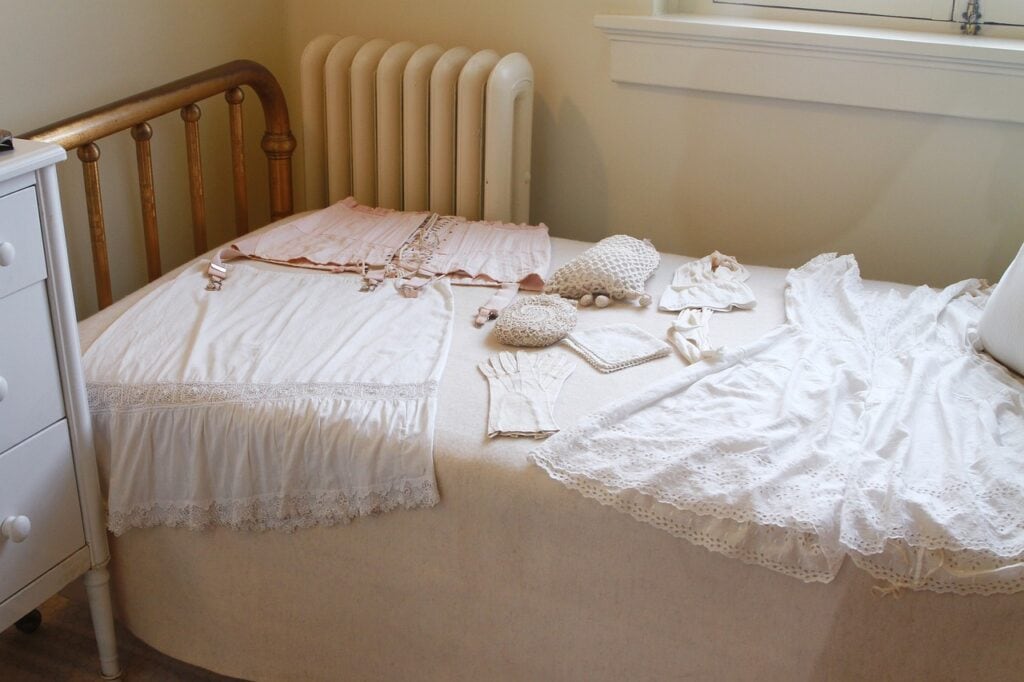
When Were Radiators Invented?
The first recorded radiators were invented by the Romans in the form of a hypocaust.
The Roman hypocaust is an early example of a type of radiator for building space heating. A Prussian-born Russian, Franz San Galli, invented the first radiator in 1855 and received its patent 2 years later.
Additionally, American Joseph Nason invented the first primitive radiator in 1841 but did not receive its patent.
Conclusion
Radiators are a common appliance in most homes. If you have one, it’s best to understand how it works and know how to best operate it. Aside from heating homes, radiators are also used in cars, cooling towers, electronics, and spacecraft.
Now that you know the pros, cons, and types of radiators, you can invest in one that best fits your preferences and intended use.
See also: 6 DIY Baseboard Heater Covers You Can Make at Home
Featured Image Credit: rawf8, Shutterstock
Contents

 Where Are Radiators Used?
Where Are Radiators Used?